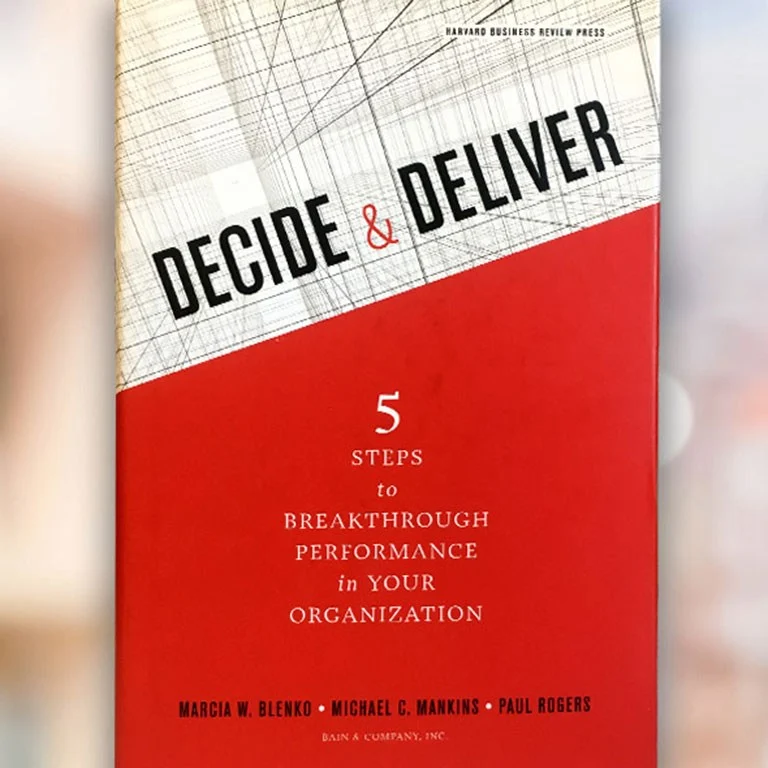Forbes.com
A structured decision approach—agreeing on criteria, facts, alternatives, commitment and closure—should help you eliminate many dysfunctional decision practices and establish more fruitful ones. But companies often find that they also need enablers—practical methods for oiling the decision-making machinery. We have found that the following four enablers are all remarkably powerful in their effects.
Set decisions up for success. Too many companies just dive into the work involved in making a major decision. They don’t set aside the time to plan, prepare and set it up for success. It helps to take some time before every such decision to ask questions such as these:
- What decision are we actually trying to make?
- What are the criteria for the decision?
- What is the information required, and what is the burden of proof?
- Who will play what role?
- What is the timeline, both for the decision and for execution?
Best-practice companies make a point of determining in advance who will recommend alternative courses of action and who will ultimately make the choice. These parties can get together in advance to answer the basic initiation questions.
Don’t try to do too much in one meeting. Meetings are key forums to make decisions, but they often run into two predictable obstacles. First, they don’t dedicate enough time to the right issues. For example, the group may try to cover operational performance and strategic decisions in the same session. That never works. The two tasks require different mindsets: Operating reviews necessarily focus on holding people’s nose to the grindstone, while strategy discussions depend on raising people’s eyes to the horizon. Once meeting attendees begin discussing either one of these topics, they focus their attention on that and give the other short shrift.
A second error: trying to discuss facts, alternatives and the decision all in the same meeting. The pharmaceutical company Roche under Franz Humer made a point of doing the precise opposite. One session decided whether the attendees had all the facts they needed and were considering the right set of options. A second session then chose among the available options (based on predetermined and agreed-upon criteria) and formalized the commitment through plans for execution. Though it sounds like a lot of trouble, separating the two kinds of meetings makes for a faster process because it eliminates much rework.

Decide & Deliver
Learn more about the five steps that leading organizations use to make great decisions quickly and execute them effectively.
Establish clear guidelines for escalation. Every organization must sometimes escalate its decisions to a higher level—for instance, when lower-level managers find themselves locked in a major disagreement. Unless there are specific guidelines for when escalation is appropriate, however, too many decisions may wind up on the desks of busy senior executives, who don’t have time to give them the attention they deserve.
A typical set of guidelines might specify (a) when escalation is appropriate; (b) how often escalation is expected to happen; and (c) what the appropriate path is. You may find it helpful to track the number of times major decisions are kicked upstairs and to brainstorm ways to manage the number down. Intel’s Embedded and Communications Group (ECG), for example, found that too many decisions were being escalated. ECG general manager Doug Davis remembers that he had to “set the expectation that we were not going to allow maverick escalations,” while also spelling out the process to follow if someone really believed a given approach was “doomed to fail.”
Use common tools and templates. Many high-performing companies use standard tools and templates to structure decisions, rather than reinventing the wheel each time. For long-term strategic decisions, planning templates can assure rigorous comparisons of opportunities across disparate parts of the business. For everyday decisions such as pricing, templates can assure that companies gather a standard set of facts and apply common analytic approaches. Using such templates facilitates data gathering and frees up people’s mental energy to focus on assessing the information and making the right decisions.
Good decision processes are as essential to an organization as good production processes. Enablers help employees learn the necessary skills and behaviors, and they reinforce those behaviors every day. The result is better, quicker decisions followed by effective execution.
Michael C. Mankins leads Bain & Company’s Organization practice in the Americas and Jenny Davis-Peccoud is senior director of Bain’s Global Organization practice.